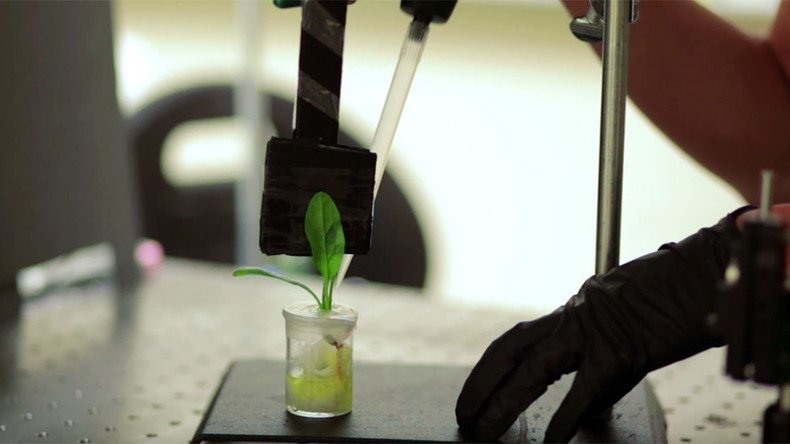MIT scientists ‘train’ spinach plants to sniff out bombs (VIDEO)

Popeye knew the secret of spinach’s superpowers, and now scientists do too. MIT researchers have found out this leafy green can detect explosives and even be turned it into a bomb-sniffing machine that works wirelessly through a smartphone.
“We demonstrate that living spinach plants (Spinacia oleracea) can be engineered to serve as self-powered pre-concentrators and auto samplers of analytes in ambient groundwater and as infrared communication platforms that can send information to a smartphone,” researchers said in a paper published in Nature Materials.
To do so, they literally embedded tiny cylinders of carbon, or carbon nanotubes as they are called, in leaves of spinach. They also painted them with a solution full of the tiny sensors, which were then absorbed.
Those carbon tubes can detect “nitroaromatics,” chemical compounds often used in landmines and other explosives. For the experiment, sensors for nitroaromatic compounds were embedded into a part of the plant, where most photosynthesis takes place.
“We have developed and demonstrated a nitroaromatic detecting wild-type spinach plant using a nanobionic approach that responds to picric acid, a common, model explosive analyte,” the researchers explained.
Some of the sensors were emitting a constant fluorescent signal, but others were meant to respond only to nitroaromatics, which allowed researchers to see the difference if sensors had detected anything.
Once the carbon tubes detect any nitroaromatics in air or groundwater, they begin to emit a fluorescent signal within just 10 minutes. In the experiment, the plant drew detected chemicals up into the leaves, where they encountered the detector.
19yo Australian ‘kangaroo bomb’ plotter sentenced to 10 yrs, would be undergoing a de-radicalization program https://t.co/nbUMrCBTIB
— RT (@RT_com) September 5, 2016
To read the signal, the team used a setup of a small infrared camera and a Raspberry Pi, “a $35 credit-card-sized computer.” Yet, it can also be easily intercepted with a common smartphone camera from about one meter away from the plant. When using a smartphone, though, it is required to remove the infrared filter that most camera phones have.
“This is a novel demonstration of how we have overcome the plant/human communication barrier,” paper co-author Michael Strano, a chemical engineer at the MIT, said in a statement.
Smells like love: Sniff out your perfect partner with odor dating sitehttps://t.co/CgfalEmPIPpic.twitter.com/UYEYoBKhUD
— RT America (@RT_America) February 20, 2016













